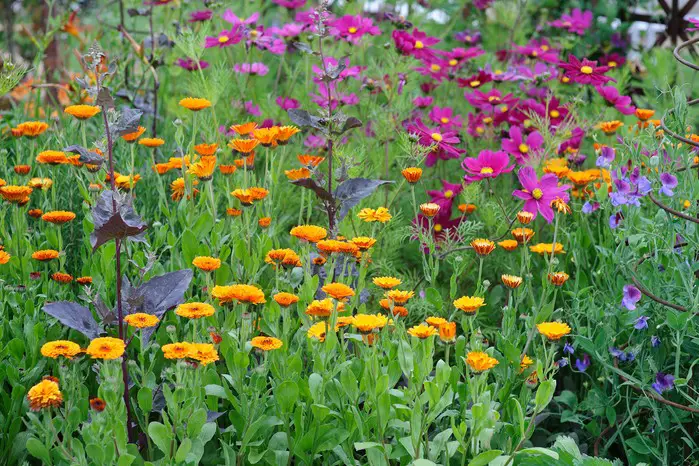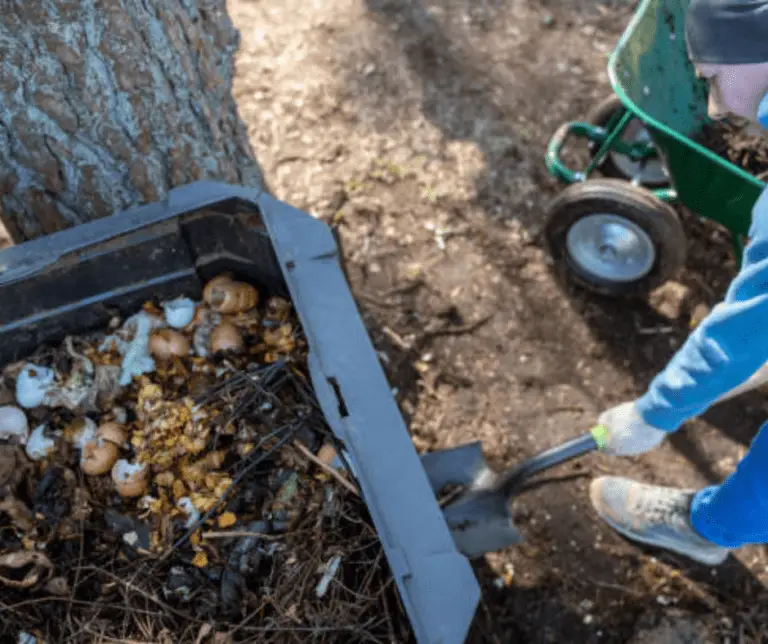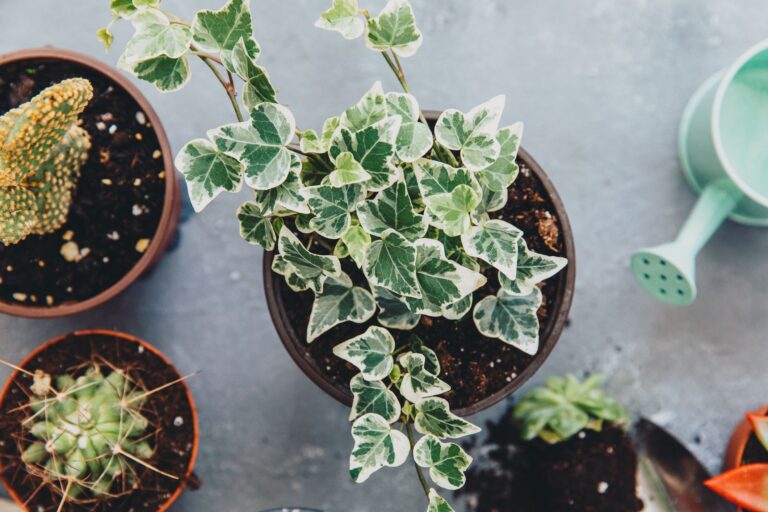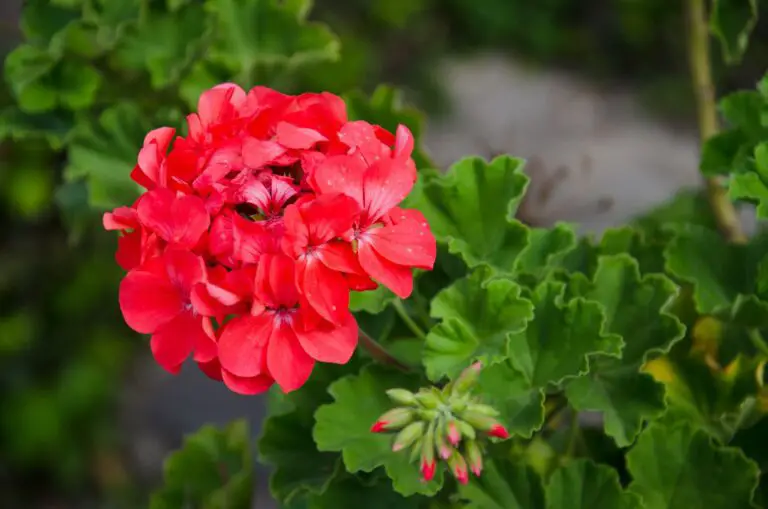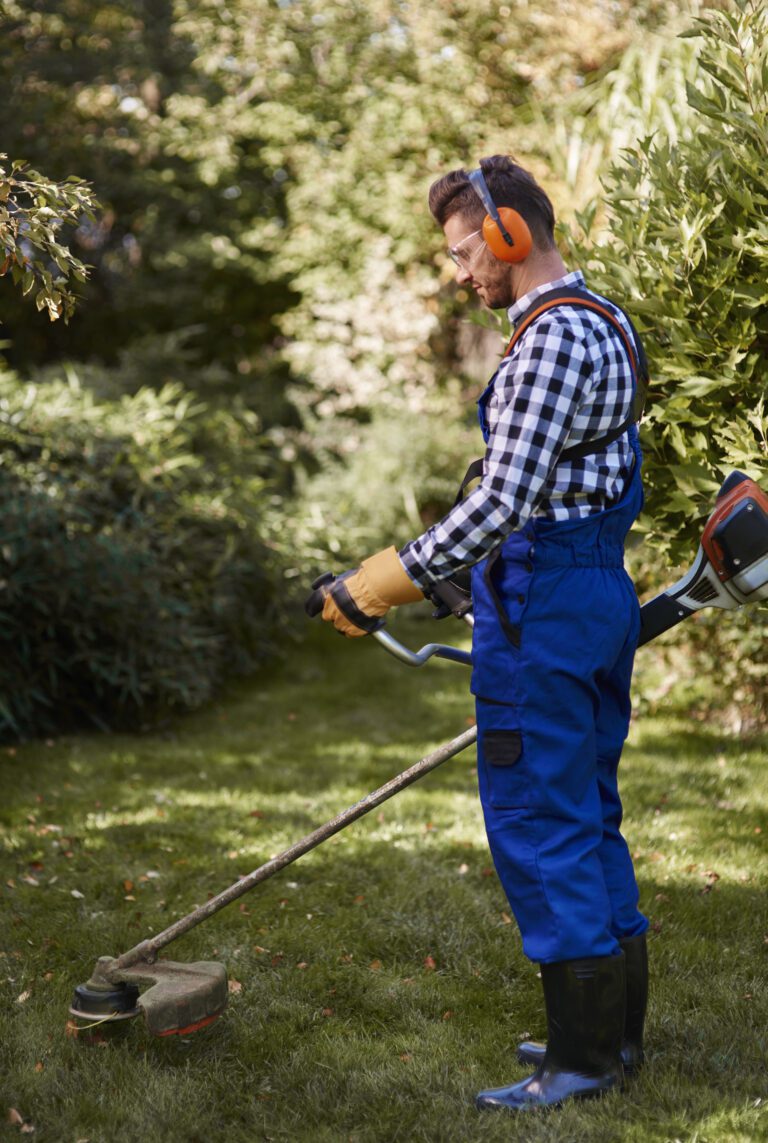best Way to Clean Grow Tent: A Guide to Cleaning and Sanitizing Your Grow Tent to Prevent Pests and Diseases
Table of Contents
Understanding the Importance of Cleaning and Sanitizing Your Grow Tent

Maintaining cleanliness and sanitation within your grow tent is of utmost importance to ensure the health and productivity of your plants. A clean and sanitized environment not only promotes optimum growth, but also prevents pests, diseases, and other potential complications from affecting your precious crops.
When it comes to growing plants in an enclosed space, such as a grow tent, the risk of contamination and the rapid spread of diseases is significantly higher compared to outdoor gardening. Factors such as the confined space, high humidity, and constant exposure to moisture create a breeding ground for harmful pathogens and pests.
Neglecting proper cleaning and sanitization practices can have serious consequences, leading to stunted growth, poor yields, and even the loss of your entire crop. Additionally, the accumulation of dirt, debris, and plant residues can obstruct ventilation systems, affecting air circulation and potentially causing fungal growth and mold.
By implementing regular cleaning and sanitization protocols, you can proactively minimize the risks associated with these issues. Not only will it help to maintain a healthy environment for your plants, but it will also ensure their robust development and maximize your overall yield.
The Risks of Neglecting Proper Cleaning and Sanitization

Proper cleaning and sanitization of your grow tent may seem like an added chore, but neglecting this crucial step can have serious consequences for both your plants and your overall gardening success. Failure to maintain a clean and sanitized environment can lead to a wide range of risks that can compromise the health and productivity of your plants.
One of the primary risks of neglecting proper cleaning and sanitization is the potential for the growth and spread of pests and diseases. A dirty and unclean grow tent becomes a breeding ground for unwanted guests, such as insects, mites, and mold spores, all of which can wreak havoc on your plants. These pests and diseases can easily multiply and spread, leading to stunted growth, wilted leaves, and even crop loss if left unchecked.
Additionally, a lack of cleanliness can also have a negative impact on the overall health of your plants. Dust, dirt, and debris that accumulate in your grow tent can block essential sunlight, reduce air circulation, and hinder the proper absorption of nutrients by your plants. This can result in weakened plants, reduced yields, and an overall decline in the quality of your harvest.
Assessing the Condition of Your Grow Tent Before Cleaning
Before you begin the cleaning process for your grow tent, it is crucial to assess its condition thoroughly. This step will allow you to identify any potential issues or areas that may require special attention. By taking the time to evaluate the state of your grow tent, you can ensure a more effective and efficient cleaning process.
First, carefully inspect the interior surfaces of your grow tent, including the walls, floors, and ceiling. Look for any signs of mold, mildew, or pest infestation, as these can hinder the growth of your plants and compromise their health. Pay close attention to corners and crevices, as these areas are often overlooked but can harbor dirt and debris.
Next, examine the condition of your ventilation systems and ducts. Check for any clogs, leaks, or damage that may affect the airflow and temperature regulation within your grow tent. Proper ventilation is essential for maintaining a healthy environment for your plants, so it is important to address any issues promptly.
By conducting a thorough assessment of your grow tent’s condition before cleaning, you can effectively plan and prioritize your cleaning tasks. This proactive approach will help ensure that you provide your plants with a clean and sanitized environment, minimizing the risk of pests, diseases, and other potential problems.
• Carefully inspect the interior surfaces of your grow tent, including walls, floors, and ceiling
• Look for signs of mold, mildew, or pest infestation
• Pay close attention to corners and crevices that may harbor dirt and debris
• Examine the condition of ventilation systems and ducts
• Check for clogs, leaks, or damage that may affect airflow and temperature regulation
• Address any issues promptly to maintain a healthy environment for your plants
• Plan and prioritize cleaning tasks based on assessment results
• Provide a clean and sanitized environment to minimize risks of pests, diseases, etc.
Gathering the Necessary Supplies for Effective Cleaning

To effectively clean your grow tent, it is essential to gather the necessary supplies beforehand. Having the right tools and cleaning agents will ensure that you can tackle any dirt, grime, or residue that may have accumulated in your tent. Here are some essential supplies you will need for an effective cleaning session:
1. Cleaning solution: Invest in a high-quality, plant-safe cleaning solution specifically designed for grow tents. Avoid using regular household cleaners as they may contain chemicals that could harm your plants.
2. Microfiber cloth: Opt for a soft microfiber cloth to wipe down the interior surfaces of your tent. This material is gentle yet effective in removing dirt and debris without scratching or damaging the tent’s fabric.
3. Spray bottle: A spray bottle is useful for evenly distributing the cleaning solution across the surfaces. It allows for better control and coverage, ensuring thorough cleaning.
4. Scrub brush: A soft-bristled brush can be used to scrub away stubborn stains or residue from the tent’s walls, floor, or ceiling. Be gentle to avoid tearing or damaging the fabric.
5. Rubber gloves: Protect your hands from potential irritation or contact with cleaning agents by wearing rubber gloves. This will also prevent the transfer of oils or contaminants from your skin onto the tent.
By acquiring these supplies, you will be well-prepared to embark on a thorough cleaning session for your grow tent. Remember, proper cleaning and sanitization are crucial for maintaining a healthy and productive growing environment.
Step-by-Step Guide: Removing Plants, Equipment, and Debris from Your Grow Tent
Removing plants, equipment, and debris from your grow tent is an essential step to ensure a clean and hygienic growing environment. By following a step-by-step guide, you can streamline this process and maintain the optimal conditions for your plants to thrive.
First, begin by carefully removing all the plants from your grow tent. Gently lift them out, being mindful of their delicate roots and foliage. Place them in a safe, temporary location where they can continue to receive adequate light and water.
Next, proceed to disconnect and remove any equipment within the grow tent. This includes lights, fans, filters, and any other accessories that may be present. Take caution not to damage any electrical components during this process. Once removed, set them aside for cleaning and sanitization later.
Lastly, it’s time to clear out the debris from the grow tent. Carefully remove any fallen leaves, stems, or other organic matter that may have accumulated. Dispose of them properly according to the guidelines provided for your specific location.
By meticulously following these steps, you can ensure a clean start for your grow tent, preparing it for thorough cleaning and sanitization in the next stages.
Certainly! Here’s a step-by-step guide for removing plants, equipment, and debris from your grow tent presented in a detailed format:
| Step-by-Step Guide | Key Steps | Instructions | Credible Source |
|---|---|---|---|
| 1. Prepare Your Workspace | – Clear the area around the grow tent for easy access. | – Move any obstacles or furniture to create space around the grow tent. | Source: Maximum Yield – How to Set Up a Grow Tent |
| 2. Turn Off Grow Lights and Equipment | – Ensure safety by turning off all grow lights and equipment. | – Switch off grow lights, fans, pumps, and any other electrical devices inside the grow tent. | Source: The Weed Blog – Indoor Cannabis Growing 101: Lights |
| 3. Remove Plants | – Carefully remove plants from their containers or grow bags. | – Gently lift each plant from its container, taking care not to damage the roots or foliage. | Source: Royal Queen Seeds – How to Transplant Cannabis Plants |
| 4. Inspect Plants for Pests or Diseases | – Check plants for any signs of pests, diseases, or nutrient deficiencies. | – Look for pests like spider mites, aphids, or whiteflies, as well as symptoms of diseases such as yellowing leaves or mold. | Source: Grow Weed Easy – Cannabis Pests & Diseases |
| 5. Clean Grow Tent Interior | – Remove equipment and wipe down surfaces with a mild cleaning solution. | – Use a damp cloth or sponge to clean the interior walls, floor, and any equipment such as fans or ducting. | Source: Gardener’s Path – How to Clean a Grow Tent |
| 6. Dispose of Debris and Waste | – Properly dispose of any plant debris, old soil, or unused equipment. | – Place organic matter in a compost bin if applicable, and discard non-biodegradable items responsibly. | Source: Planet Natural – Recycling Soil and Pots |
| 7. Organize and Store Equipment | – Store equipment in a clean, dry area to prevent damage and contamination. | – Label and organize equipment such as pots, trays, and tools for easy retrieval when needed. | Source: Growers Network – Organizing Your Grow Room |
Safely Disposing of Plant Material and Debris
Properly disposing of plant material and debris is a crucial step in maintaining a clean and healthy environment for your grow tent. Neglecting this step can lead to the accumulation of waste, which can become a breeding ground for pests and diseases. So, what is the best way to safely dispose of plant material and debris?
Firstly, it’s important to separate the plant material and debris from your grow tent. This can be done by carefully removing any plants and placing them in a designated area for further processing or composting. The debris, such as leaves, stems, and other organic matter, should be collected and bagged for proper disposal.
When disposing of plant material and debris, it is recommended to avoid throwing them in regular household waste bins. Instead, consider composting the organic materials. Composting not only reduces waste but also provides nutrient-rich soil that can be used for future gardening endeavors. However, if composting is not feasible for you, check with your local waste management authorities for guidelines on how to dispose of green waste appropriately.
By taking the necessary steps to safely dispose of plant material and debris, you are not only promoting a clean and organized grow tent, but also minimizing the risks of pests and diseases that can harm your plants. Stay tuned for the next section, where we will discuss the proper cleaning techniques for the interior surfaces of your grow tent.
Cleaning the Interior Surfaces of Your Grow Tent: Walls, Floors, and Ceiling
When it comes to cleaning your grow tent, one of the most important tasks is effectively cleaning the interior surfaces, including the walls, floors, and ceiling. Neglecting proper cleaning in these areas can lead to the accumulation of dirt, dust, and potentially harmful pathogens that can negatively impact the health and growth of your plants.
To begin the cleaning process, start by removing any plants, equipment, and debris from your grow tent. This will allow you to access all areas for a thorough cleaning. Use a soft brush or cloth to gently scrub the walls, floors, and ceiling, paying close attention to any areas that may have visible dirt or stains.
Next, you’ll want to use a suitable cleaning solution that is safe for use in a grow tent environment. Avoid using harsh chemicals that may leave behind residues or interfere with the growth of your plants. Look for products specifically designed for cleaning grow tents, as these will be formulated to effectively remove dirt and grime without posing a risk to your plants.
Regularly cleaning the interior surfaces of your grow tent is essential for maintaining a healthy and productive growing environment. By removing built-up debris and sanitizing the surfaces, you can help prevent the spread of pests and diseases, ensuring that your plants thrive and produce optimal yields. So, take the time to clean your grow tent thoroughly, and you’ll reap the rewards in the form of vibrant, healthy plants.
Paying Attention to Ventilation Systems and Ducts
Ventilation systems and ducts play a crucial role in maintaining a healthy and productive environment within your grow tent. Proper attention and maintenance are key to ensuring optimal airflow and preventing the build-up of contaminants. Neglecting to clean and sanitize these components can lead to a host of problems, including poor air quality, increased risk of plant diseases, and reduced overall yields.
When it comes to cleaning your ventilation systems and ducts, it’s important to start by inspecting them for any signs of damage or blockages. Check for obstructions such as dust, debris, or mold that may impede airflow. Additionally, make sure that all vents and fans are in proper working order, as any malfunctioning components can hinder the overall effectiveness of your ventilation system. Regularly cleaning and maintaining these crucial elements will help promote a healthier growing environment and contribute to the success of your crops.
In order to effectively clean your ventilation systems and ducts, consider using a combination of techniques. Removing any visible dust or debris with a soft brush or cloth is a good first step. For more thorough cleaning, you may need to use specialized cleaning agents or disinfectants that are specifically designed for use in grow tent environments. Always follow the manufacturer’s instructions and safety guidelines when using these products. Once cleaned, ensure the components are thoroughly dried before reassembling and reactivating your ventilation system. By paying close attention to the cleanliness and functionality of your ventilation systems and ducts, you can create an optimal growing environment for your plants and minimize the risk of potential issues.
Sanitizing Your Grow Tent: Choosing the Right Products and Techniques
Choosing the right products and techniques for sanitizing your grow tent is crucial to ensure a clean and healthy environment for your plants. When it comes to selecting the appropriate products, it is essential to consider both effectiveness and safety. Look for sanitizers specifically designed for use in grow tents, as they are formulated to eliminate common pathogens and pests while being gentle on plants.
One effective option is hydrogen peroxide, which is widely used for sanitizing grow tents. It is a powerful disinfectant that can kill bacteria, fungi, and viruses without leaving harmful residues. Make sure to dilute hydrogen peroxide according to the manufacturer’s instructions and apply it to all surfaces of your grow tent using a spray bottle or clean cloth. Remember to wear protective gloves and eyewear when working with hydrogen peroxide to avoid any potential skin or eye irritation.
Another popular choice is a mixture of water and vinegar, which has natural disinfectant properties. Vinegar can effectively kill many types of bacteria and fungi, making it a safe and eco-friendly option for sanitizing your grow tent. Dilute vinegar with water in a 1:1 ratio and use a spray bottle or cloth to apply it to the interior surfaces of your tent. Allow it to sit for a few minutes before wiping it clean. However, be cautious when using vinegar as some plants may be sensitive to its acidic properties, so it is recommended to test it on a small area first. Overall, understanding the right products and techniques for sanitizing your grow tent helps maintain a clean and disease-free environment for your plants, maximizing their growth potential.
Rinsing and Drying Your Grow Tent Properly
After thoroughly cleaning and sanitizing the interior surfaces of your grow tent, the next crucial step is to ensure proper rinsing and drying. Rinsing your grow tent helps to remove any remaining cleaning solution or residue, while drying is essential for preventing the growth of mold and mildew.
To rinse your grow tent, start by using a clean cloth or sponge soaked in fresh water to wipe down all the surfaces. Pay special attention to corners and crevices where cleaning solution might have accumulated. Repeat this process until all traces of the cleaning solution are removed.
Once the rinsing is complete, it’s time to dry your grow tent. Proper drying is essential to prevent the growth of mold and mildew, which can be detrimental to your plants’ health. Ensure that all surfaces are completely dry before reassembling your grow tent. Leave the tent in a well-ventilated area with good air circulation to expedite the drying process.
Cleaning and Sanitizing Equipment: Lights, Fans, and Filters
Lights, fans, and filters are essential components of a well-functioning grow tent. Not only do they provide the necessary light and airflow for plant growth, but they also play a crucial role in maintaining a clean and healthy environment. Cleaning and sanitizing this equipment is vital to ensure optimal performance and prevent the buildup of dust, mold, and other contaminants.
When it comes to cleaning lights, it is crucial to follow the manufacturer’s instructions to avoid any damage. Start by turning off and unplugging the lights. Gently remove any dust or debris using a soft brush or cloth. For more stubborn dirt, you can use a mild detergent solution or specialized cleaning products designed for grow lights. Be sure to dry the lights thoroughly before reassembling and reconnecting them.
Fans and filters also require regular cleaning to maintain their effectiveness. Turn off and unplug the fans before starting the cleaning process. Remove any visible dirt or debris by gently wiping the blades with a damp cloth or using a vacuum cleaner with a brush attachment. If the fan is particularly dirty, you may need to disassemble it to clean the individual parts. Filters should be cleaned according to the manufacturer’s instructions. In most cases, you can simply rinse them with water or use a mild soap solution. Ensure that all components are fully dry before reassembling and putting them back into the grow tent.
By incorporating regular cleaning and sanitization of lights, fans, and filters into your maintenance routine, you can prolong their lifespan, maximize their performance, and create a healthy environment for your plants to thrive. Neglecting this crucial aspect of grow tent care can lead to reduced yield, increased risk of pest and disease infestations, and overall poor plant growth. So, take the time to care for and maintain these essential components, and you’ll see the results in the health and productivity of your garden.
Maintaining a Regular Cleaning Schedule to Prevent Pests and Diseases
Regular cleaning and sanitization of your grow tent is crucial in preventing the infestation of pests and the spread of diseases. By maintaining a consistent cleaning schedule, you not only ensure the health and vitality of your plants but also safeguard your investment in equipment and supplies.
Pests and diseases can wreak havoc on your cultivated crops, leading to stunted growth, reduced yields, and even the complete loss of your harvest. Implementing a regular cleaning schedule helps to eliminate any potential breeding grounds for pests, as well as removing any dust, debris, or organic matter that could harbor harmful pathogens. Neglecting proper cleaning and sanitization can create an ideal environment for pests and diseases to thrive, with the potential to spread throughout your grow tent and infect your plants.
Maintaining a regular cleaning schedule involves a series of steps designed to thoroughly cleanse and sanitize your grow tent. This includes removing plants, equipment, and debris, cleaning the interior surfaces of the tent, paying attention to ventilation systems and ducts, and sanitizing all areas and equipment using appropriate products and techniques. By following these steps consistently, you can significantly reduce the risks associated with pests and diseases, ensuring optimal conditions for your plants to grow and thrive.
Troubleshooting Common Cleaning Issues and Challenges.
Growing plants in a controlled environment such as a grow tent can be a rewarding experience, but it’s not without its challenges when it comes to cleaning and maintenance. Common cleaning issues and challenges can arise, even with regular care and attention. One of the most prevalent problems is the buildup of mineral deposits on the interior surfaces of the grow tent. These deposits can occur as a result of using hard water for irrigation or from the accumulation of nutrient residue. To address this issue, it is recommended to use a mild acid solution, such as diluted vinegar or citric acid, to dissolve and remove the mineral deposits. It’s important to avoid using harsh chemicals or abrasives that could damage the delicate surfaces of the grow tent.
Another common issue is the occurrence of mold and mildew. The dark and humid environment of a grow tent can provide a perfect breeding ground for these harmful fungi. To prevent mold and mildew growth, it is essential to maintain proper ventilation and airflow within the grow tent. This can be achieved by regularly cleaning and inspecting ventilation systems, ensuring that ducts and filters are free from debris and blockages. Additionally, using a fan or dehumidifier can help regulate humidity levels and discourage mold and mildew growth. If mold or mildew does appear, it should be promptly addressed by removing and replacing affected materials, and treating the area with a suitable antifungal solution. By proactively troubleshooting and addressing these common cleaning issues, growers can ensure that their grow tent remains a healthy and productive environment for their plants.
How often should I clean and sanitize my grow tent?
It is recommended to clean and sanitize your grow tent at least once every grow cycle or every 3-4 months to prevent the buildup of pests and diseases.
Can I use regular household cleaning products to clean my grow tent?
No, it is important to use specialized cleaning products that are safe for use in grow tents. Regular household cleaning products may contain chemicals that can be harmful to your plants.
How should I clean the ventilation systems and ducts in my grow tent?
You can use a damp cloth or sponge to wipe down the exterior of the ventilation systems and ducts. It is important to avoid using excessive moisture to prevent mold growth.
What should I do if I notice mold or mildew in my grow tent?
If you notice mold or mildew in your grow tent, it is crucial to address the issue immediately. Remove the affected plants and equipment, clean the area thoroughly with a mild bleach solution, and ensure proper ventilation to prevent future mold growth.
Can I reuse the cleaning solution for multiple cleanings?
It is not recommended to reuse the cleaning solution for multiple cleanings as it may become contaminated with pests, diseases, or mold. It is best to prepare a fresh solution for each cleaning session.
How long should I let my grow tent dry after cleaning and sanitizing?
It is important to allow your grow tent to completely air dry before reintroducing plants and equipment. This typically takes around 24-48 hours, depending on the humidity levels in your environment.
Is it necessary to clean and sanitize equipment such as lights, fans, and filters?
Yes, it is crucial to clean and sanitize all equipment regularly to prevent the buildup of dust, debris, and pathogens. This helps maintain optimal performance and ensures a healthy growing environment.
What can I do if I encounter stubborn stains or residue during cleaning?
If you encounter stubborn stains or residue, you can try using a mild detergent or specialized cleaning products designed for grow tent surfaces. Gently scrub the affected area with a soft brush or sponge to remove the stains.
How can I prevent pests and diseases from infesting my grow tent?
Along with regular cleaning and sanitization, it is important to maintain a strict hygiene routine, including proper plant and equipment inspections, quarantine procedures for new plants, and implementing pest control measures as necessary.
Are there any specific cleaning tips for organic growers?
Organic growers should use organic and eco-friendly cleaning products to maintain the integrity of their organic crops. It is also important to follow organic certification standards and guidelines while cleaning and sanitizing the grow tent.


